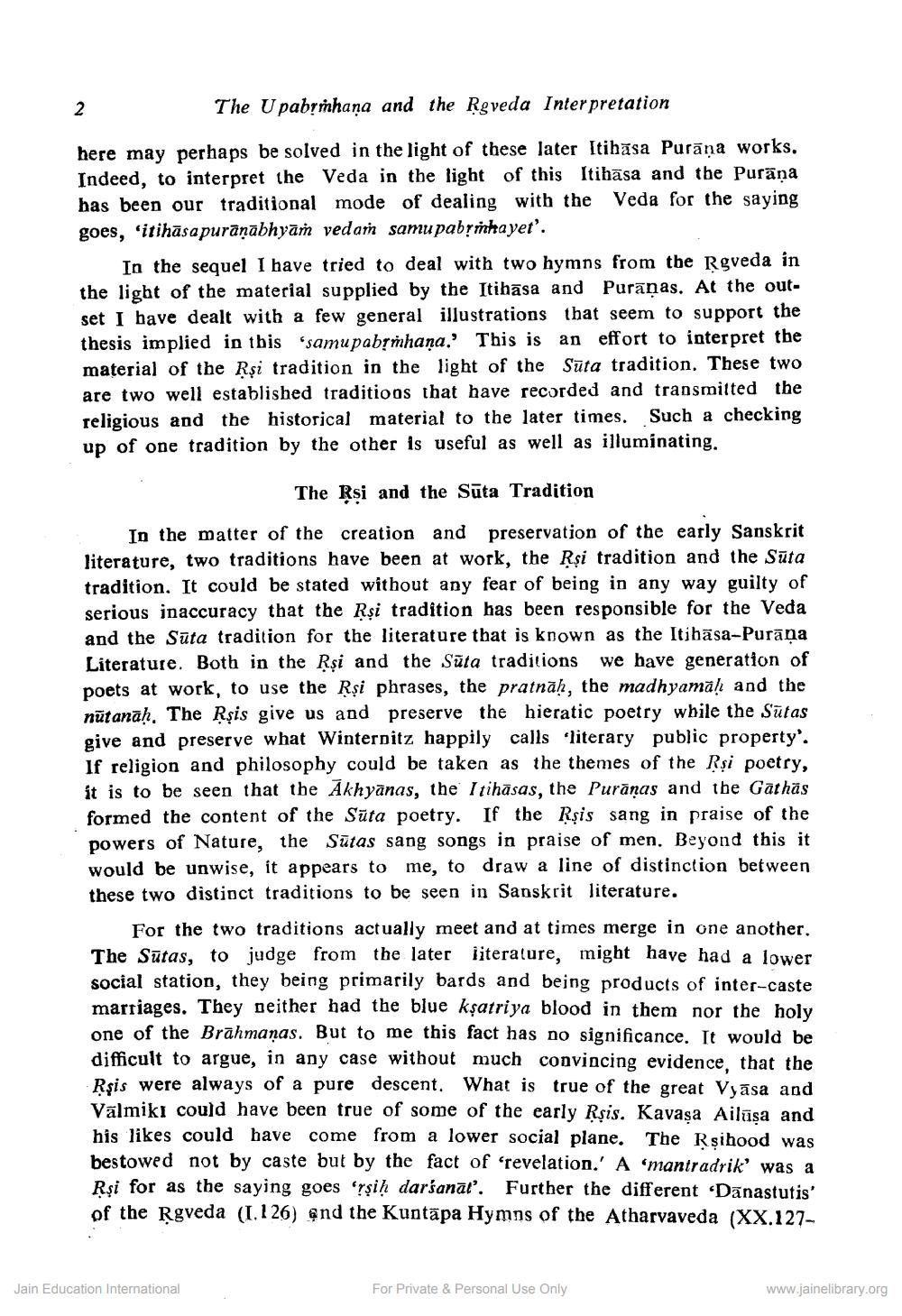________________
The Upabṛmhana and the Rgveda Interpretation
here may perhaps be solved in the light of these later Itihasa Purana works. Indeed, to interpret the Veda in the light of this Itihasa and the Puraṇa has been our traditional mode of dealing with the Veda for the saying goes, itihasapurāṇābhyāṁ vedam samupabṛmhayet'.
2
In the sequel I have tried to deal with two hymns from the Rgveda in the light of the material supplied by the Itihasa and Puranas. At the outset I have dealt with a few general illustrations that seem to support the thesis implied in this 'samupabṛmhana.' This is an effort to interpret the material of the Rşi tradition in the light of the Suta tradition. These two are two well established traditions that have recorded and transmitted the religious and the historical material to the later times. Such a checking up of one tradition by the other is useful as well as illuminating.
The Rsi and the Suta Tradition
In the matter of the creation and preservation of the early Sanskrit literature, two traditions have been at work, the Rşi tradition and the Suta tradition. It could be stated without any fear of being in any way guilty of serious inaccuracy that the Rsi tradition has been responsible for the Veda and the Suta tradition for the literature that is known as the Itihasa-Purana Literature. Both in the Rși and the Suta traditions we have generation of poets at work, to use the Rși phrases, the pratnah, the madhyamaḥ and the nutanaḥ. The Ṛsis give us and preserve the hieratic poetry while the Sutas give and preserve what Winternitz happily calls literary public property'. If religion and philosophy could be taken as the themes of the Rși poetry, it is to be seen that the Akhyānas, the Itihasas, the Puranas and the Gathās formed the content of the Suta poetry. If the Rsis sang in praise of the powers of Nature, the Sutas sang songs in praise of men. Beyond this it would be unwise, it appears to me, to draw a line of distinction between these two distinct traditions to be seen in Sanskrit literature.
For the two traditions actually meet and at times merge in one another. The Sūtas, to judge from the later literature, might have had a lower social station, they being primarily bards and being products of inter-caste marriages. They neither had the blue ksatriya blood in them nor the holy one of the Brahmanas. But to me this fact has no significance. It would be difficult to argue, in any case without much convincing evidence, that the Rşis were always of a pure descent. What is true of the great Vyasa and Valmiki could have been true of some of the early Rsis. Kavaṣa Ailuṣa and his likes could have come from a lower social plane. The Rṣihood was bestowed not by caste but by the fact of revelation.' A mantradrik' was a Rşi for as the saying goes rşiḥ darśanat'. Further the different 'Danastutis' of the Rgveda (I.126) and the Kuntapa Hymns of the Atharvaveda (XX.127
Jain Education International
For Private & Personal Use Only
www.jainelibrary.org




